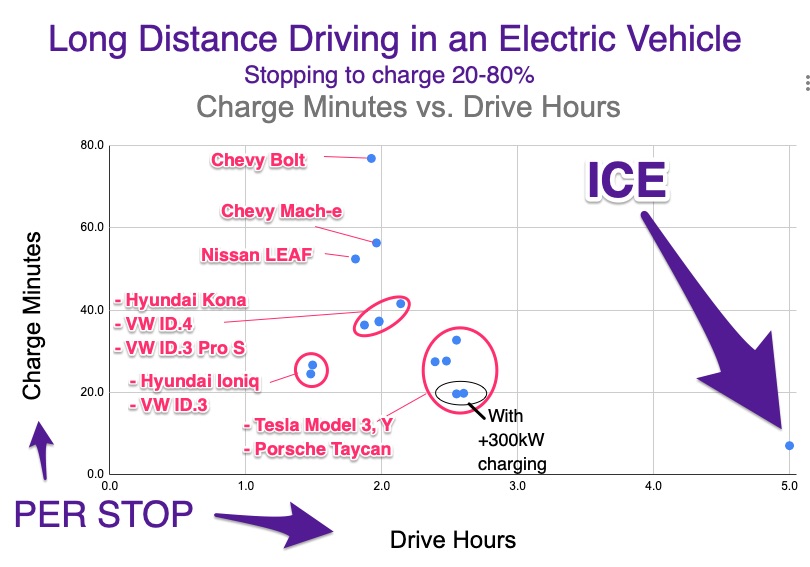In February 2021, Edmunds reported the range of several EVs. Telsa was more consistantly below the EPA range estimates than other manufacturers. Tesla’s engineers called Edmunds and challenged the numbers stating primarily that they had not run the batteries to empty, but rather relied on the car’s reported range available. Edmunds then ran a new test which showed that including those extra miles, Telsa’s ranges would be much closer to the EPA estimates.
Rob Mauer of Telsa Daily was able to interview Edmunds Chief Scientist XX on his podcast. Let me first say that Rob Mauer and his Tesla Daily podcast is the best single source of Tesla news, PERIOD! Also, I am long TSLA.
Disappointment with Tesla Daily
I have the utmost respect for Rob and his work, but this episode was a low point for me. It had lots of discussion over whether or not there was a misrepresentation of data and was trying to put Tesla in a bad light. The episode actually makes me question to what extent Rob is losing his impartiality. And although I really hate to say this, I wonder if his purchase of a Tesla has impacted this as well.
I would have liked to see more precision over what the data was and how it was presented and why it may or may not be different for different automakers.
Also, don’t you think you have links to the Edmunds’ article in your YouTube description? Seems almost like you don’t want to give them any more readers.
Disappointment with Edmunds
I do not think that Edmunds is intentionally biased against Tesla. I do think that they want to be in the news and get more viewers of their content. Anyone familiar with EVs knows that fueling an EV (a.k.a. charging) is a much more complex and VARIABLE process than that of fueling an ICE vehicle (a.k.a. gassing up).
The general public is familiar with ICE cars and ranges. With EVs, comparison tables should only be used in the charging conditions are EXACTLY the same. Just noting temperature differences is COMPLETELY insufficient.
Also, ICE cars range includes “Empty Reserve” so shouldn’t the same be used for EVs? I cannot believe that this did not come up in Edmunds’ article or in this discussion.
Shame on you Edmunds!
Disappointment with BOTH
Why was there no discussion by anyone on the differences of range in an EV versus an ICE?
Why was there no discussion about testing differences of range in an EV versus an ICE?
Every ICE car I have ever driven has an “Empty Reserve” that is extra fuel left once the indicator show EMPTY. Many ICE cars also now show range remaining estimates. How does this compare to an EV?
Just because EVs show their fuel levels as range remaining, that does not mean that they might not have an “Empty Reserve” as well. And once you think about it, it makes even more sense for EVs to have an empty reserve than an ICE because of the potential impact on the battery life.
YouTube Video
Functional Range
Driving an EV for trips where on-the-road charging is required is a different and much more TIME-CONSUMING endeavor than driving an ICE car. Fueling takes 4-10 times as long. Stops must be planned out because of limited charging opportunities.
Looking at “Functional Range” of an EV versus an ICE, the situation is WAY WORSE than the EPA or any other estimates of range would lead you to believe. If you are just doing daily driving and charging at night, EVs rock and ICE cars are pretty EXCELLENT as well.
It is for on-the-road driving, where we care about range. I’ll call this functional range.
Functional Range: How far can you expect to drive this vehicle between stops when driving on the road.
For ICE cars, this number would be 85-95% of the EPA estimates depending on your driving habits.
For EVs, we have two BIG addition considerations. First, the charging rate slows DRAMATICALLY as you fill the battery. As a practical number, it seems that about 80% SOC (State-Of-Charge) has become a somewhat optimal charge level for current battery tech.
The second consideration is the relative SPARSENESS of charging stations (fast chargers) and for technology other than Tesla you also need to consider the very high rate of DYSFUNCTIONAL charging stations.
Taking these two considerations together, I see that under practical circumstances you’d expect to charge you EV from around 20% to at most 80%. This gives the functional range of an EV to be about 60% of the EPA range estimates.
This is the really big story.
Fueling vs Driving Time
We have been spoiled by ICE cars and the energy density of gas. Even the best EVs are hardly comparable to ICE for drive vs. fueling time.

Sorry about the mislabel of the Mach-e as a Chevy, but I decided to just leave it for now until I get more time.